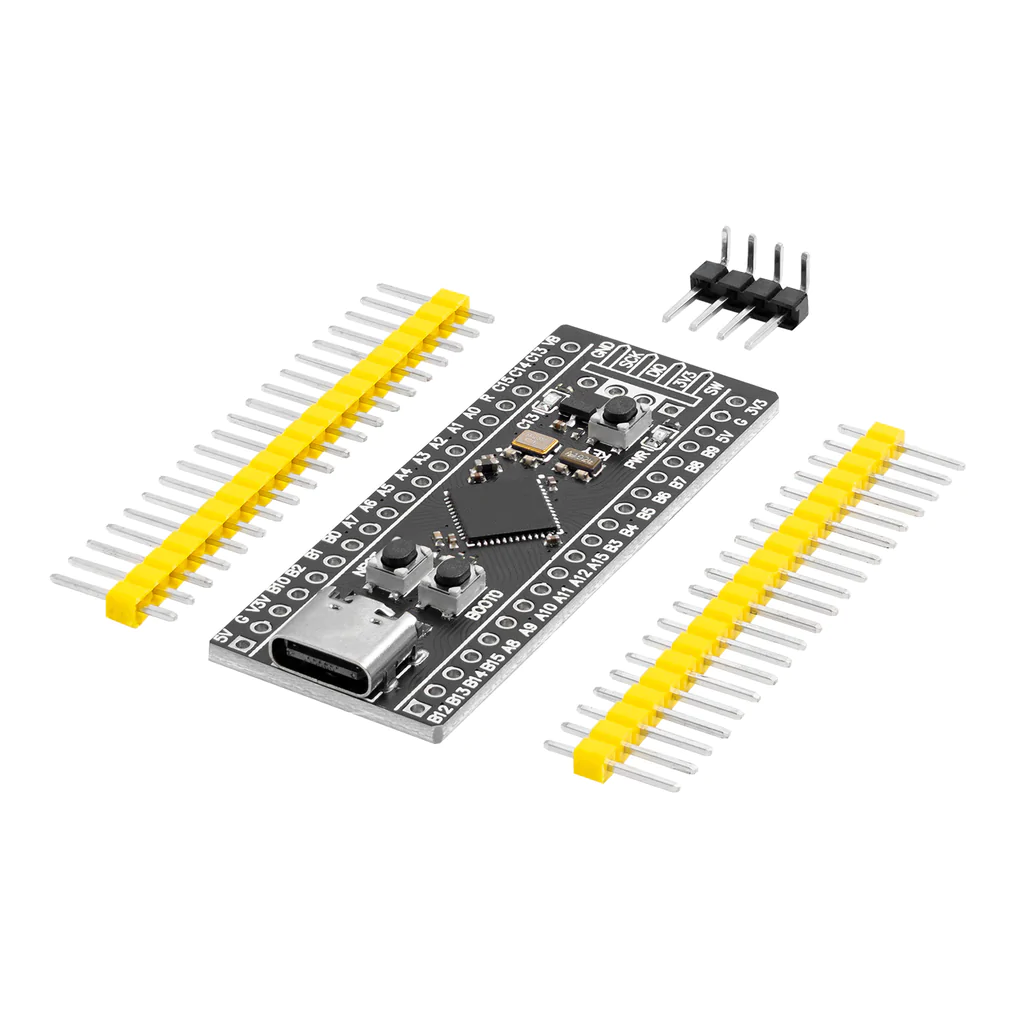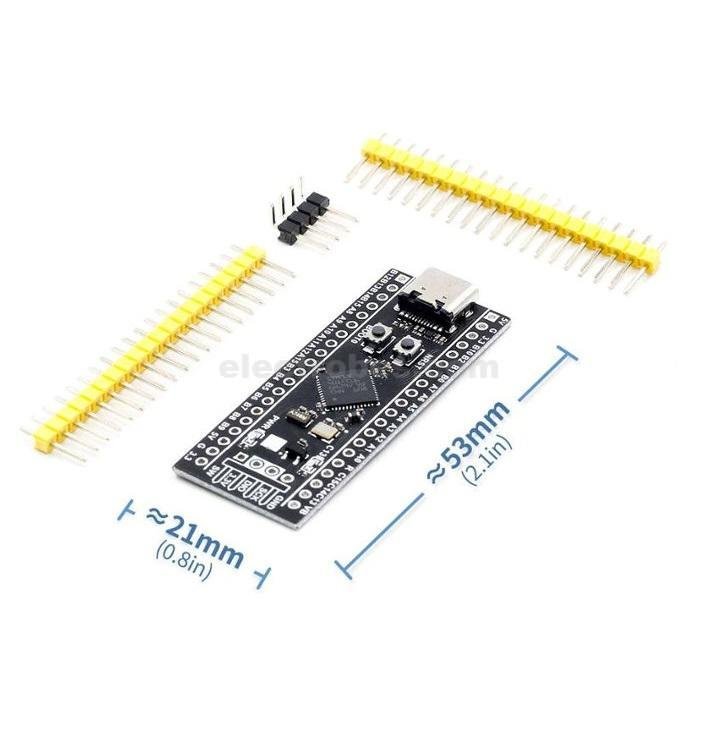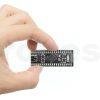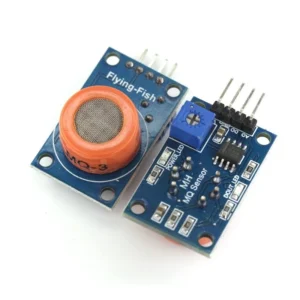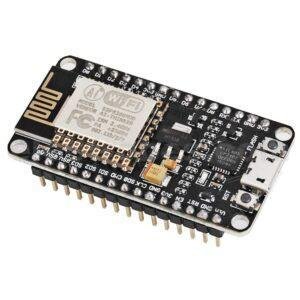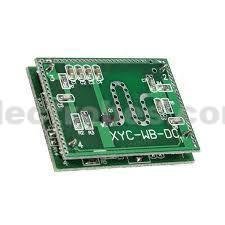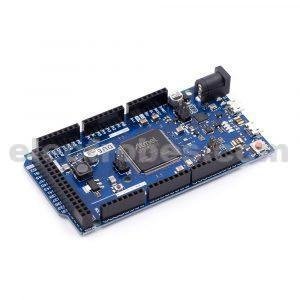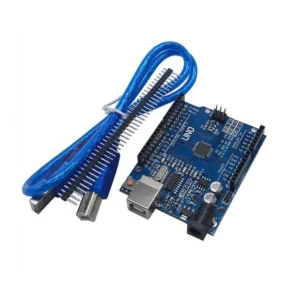Modules and Breakout Boards, STM Boards
STM32F401 Minimum System Development Board Module STM32F401CCU6 STM32F4
Availability:
In stock
₨ 950
In stock
"STM32F401 Minimum System Development Board Module STM32F401CCU6 STM32F4" added to wishlist
Please login to continue
The STM32F401 ‘Black pill’ development board is an updated version of the original F103 based black pill. This newer version features a more powerful Core-M4F based ARM CPU which brings with it a number of enhanced features, including more flash, SRAM memory, a Floating Point Unit, and an increased number of peripherals, including built in USB type-C OTG support. However, possibly the most amazing feature of this development board is the price. When compared to Atmel based Arduino development boards this little development board boasts a very impressive array of features for a fraction of the cost.
Features:
- STM32F411CEU6 (100Mhz) with 512KB FLASH & 128KB RAM
- Onboard LDO for 5V to 3.3V DC conversion
- 2x 20 Pin Single Line Header which gives access to all the IOs. The board comes with unsoldered header connectors.
- Header for SWD Programming Interface
- Switches for Reset, Boot Mode, User
- LED for Power and another connected on GPIO(C13)
- 25MHZ high speed crystal, 32.768Khz low speed crystal
- BOOT0 and NRST, releasing NRST to access serial port download, DFU download, using ST multi-in-one STM32 Cube Programmer burning software.
- Option to solder SPI Memory on the bottom side of the board.
- USB-C type Connector
Interface Description:
- SWD interface: support simulation, download and debugging
- Micro USB interface: power supply and USB communication, download is not supported
- USART1 interface: USART1 can be used to download programs, or use USART1 for communication
- MCU pin interface: lead out all I/O port pins for easy connection with peripherals
- 5V and 3.3V power input and output interface: often used for external power supply, or common grounding treatment with other modules
Other Equipment Description:
- Power indicator (PWR): The status of the power indicator, which can determine whether the power is stable
- User LED (PC13): Convenient for I/O output testing or indicating program operation
- Start to jump to select programming mode: (1, user flash memory 2, SRAM 3, system memory)
- Reset button: reset the chip for the user program
- 8M crystal oscillator: the frequency can be set to make the system main frequency 72MHz
- 32.768KHz crystal oscillator: can be used for built-in RTC or calibration
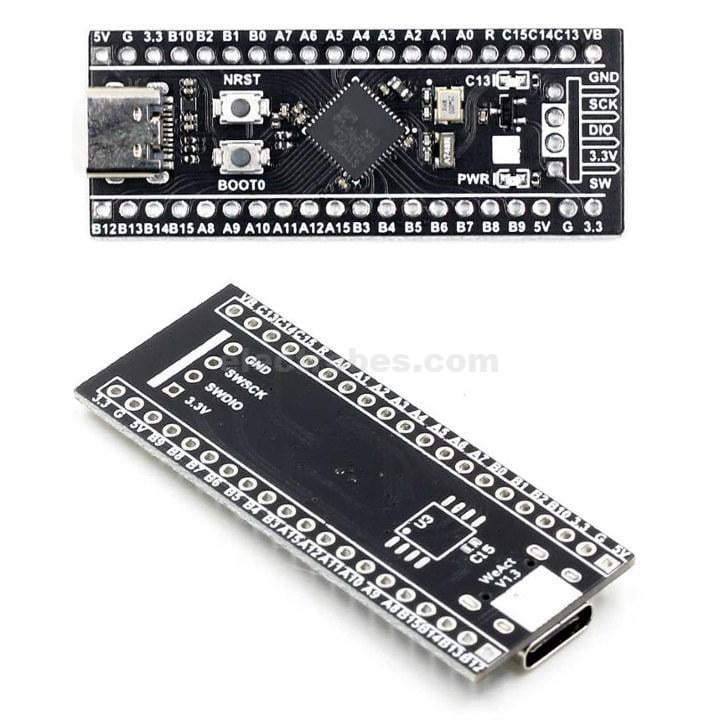
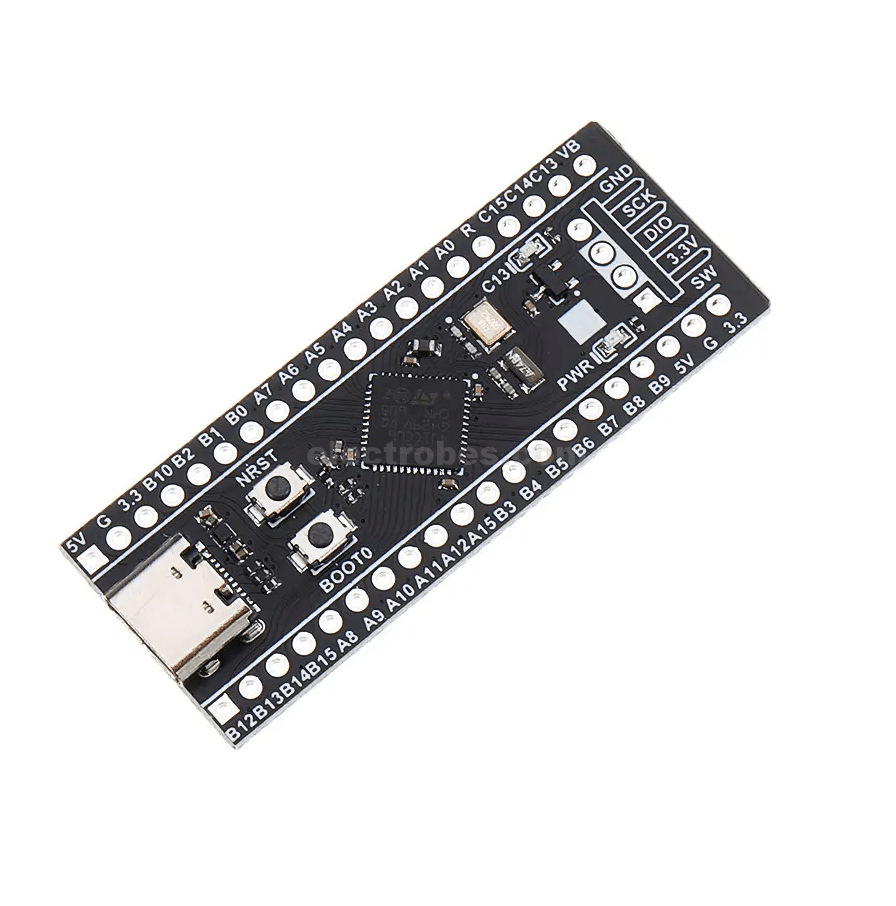
- Number of pins: 48
- Core: Cortex-M3
- Working frequency: 72MHz
- Storage resources: 64K Byte Flash, 20KByte SRAM
- Interface resources: 2x SPI, 3x USART, 2x I2C, 1x CAN, 37x I/O port
- Analog-to-digital conversion: 2x ADC (12 bits / 16 channels)
- Timer: 3 general timers and 1 advanced timer
- Debug download: support JTAG/SWD debug interface download, support IAP
- RT9193: 3.3V voltage regulator chip, maximum output 300mA


